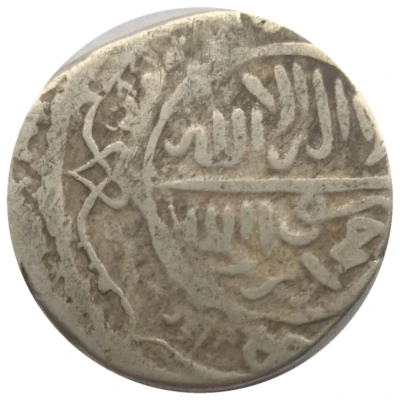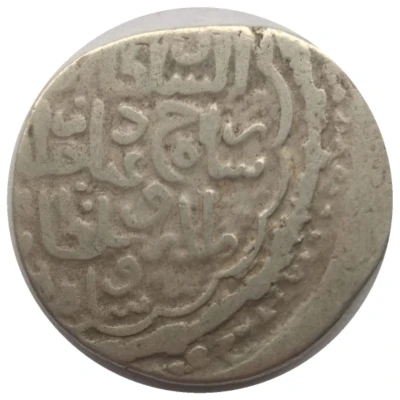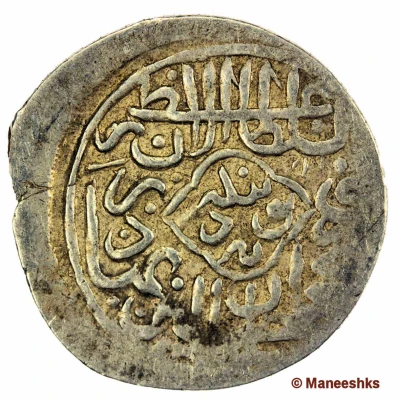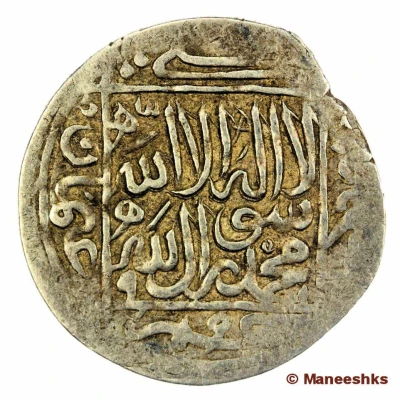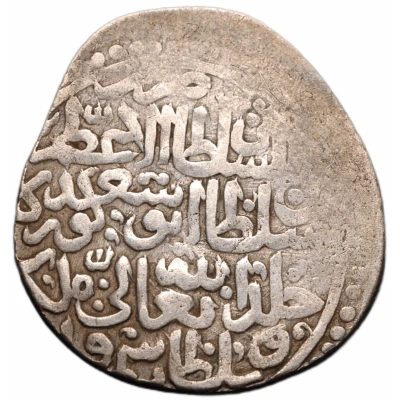
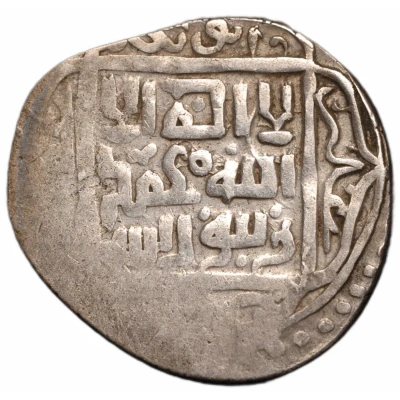

© Jacob Bykhovsky (CC BY-NC-SA)
Tanka - Abu Sa'id Gurkan
864 (1451-1469) years| Silver | 5.07 g | 25 mm |
| Issuer | Timurid Empire (Mongol States) |
|---|---|
| Type | Standard circulation coin |
| Year | 864 (1451-1469) |
| Calendar | Islamic (Hijri) |
| Value | 1 Tanka |
| Currency | Tanka (1370-1507) |
| Composition | Silver |
| Weight | 5.07 g |
| Diameter | 25 mm |
| Shape | Round (irregular) |
| Technique | Hammered |
| Orientation | Variable alignment ↺ |
| Demonetized | Yes |
| Updated | 2024-10-06 |
| Numista | N#353216 |
|---|---|
| Rarity index | 93% |
Reverse
Full Kalima centre, 4 Rashidun Caliphs named in margins.
Lettering:
لا اله الا
الله محمد
رسول الله
ابوبکر / عمر / عثمان / علی
Translation:
There is no God but Allah
(and) Muhammad is the
Messenger of Allah
Abu Bakr / Omar / Othman / Ali (margins)
Edge
Plain
Comment
Abu Sa'id Gurkan (also known as Abu Sa'id Mirza) ruled from Samarkand from 855-873H (1451-1469AD), and from Herat 863-873H (1459-1469AD). Abu sai'd was the paternal grandfather of Babur, founder of the Mughal Empire in 1526AD."2416.1 AR Tanka, Sunni reverse with Kalima in square (reverse T1):
First regular series of this reign, struck from 855-864 at most mints under his control. Samarqand is the only common mint. "
"AR Tanka, Sunni reverse with Kalima in quatrefoil (reverse T2):
Second regular series of this reign, introduced after the temporary conquest of Astarabad in 864 and struck until the end of the reign in 873. The reverse cartouche has the same shape as the common countermark of his reign (#2417). Many mints, of which Astarabad is the most common, with Herat and Samarqand also relatively common."
"2416.3 AR tanka, Sunni reverse with kalima in hexafoil, Astarabad 864 only:
Special design commemorating Abu Sa‘id’s first conquest of Astarabad in 864."
Source page 262
Herat mint example (T1 reverse, ٨٦٣/863H):
© Blake S
Interesting fact
One interesting fact about the Standard circulation coin Tanka - Abu Sa'id Gurkan 864 (1451-1469) from Timurid Empire (Mongol States) made of Silver weighing 5.07 g is that it features a unique blend of Islamic and Mongolian influences in its design. The coin's obverse side features a stylized representation of the Mongolian emperor, Abu Sa'id Gurkan, while the reverse side bears an inscription in Arabic script that reads "al-sultanu al-azam" or "the great king." This blending of cultural influences reflects the rich history of the Timurid Empire, which was founded by Timur, also known as Tamerlane, a Turco-Mongol leader who united various tribes and expanded his empire across Central Asia and the Middle East.
